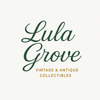Promotional items have long been used by companies to build brand loyalty and spread awareness. From quirky giveaways at trade shows to branded merchandise tucked into cereal boxes, these items now serve as nostalgic collectibles that reflect the marketing trends of their time.
What Are Vintage Promotional Items?
Vintage promotional items include branded merchandise distributed for free or as part of a marketing campaign. Common examples include:
- Fast food toys (like those from McDonald's or Chick-fil-A)
- Branded pens, mugs, and calendars
- Advertising buttons and pins
- Product samples and packaging
- Trade show giveaways
These items often feature logos, slogans, or mascots that evoke a specific era, making them appealing to collectors and historians alike.
Why Collect Them?
Collectors are drawn to promotional items for several reasons:
- Nostalgia: They remind people of childhood, past jobs, or favorite brands.
- Design: Many items feature unique artwork or packaging.
- Historical Value: They reflect cultural and advertising trends.
- Rarity: Some items were produced in limited quantities or are hard to find in good condition.
How to Evaluate Value
When assessing a vintage promotional item, consider:
- Condition: Is it clean, intact, and free of damage?
- Brand Recognition: Items from iconic brands tend to be more desirable.
- Age: Older items, especially pre-1980s, often hold more value.
- Rarity: Limited edition or region-specific items are especially collectible.
- Packaging: Original packaging can significantly increase value.
Preservation Tips
To maintain the value of your collection:
- Store items in a cool, dry place away from sunlight.
- Use archival boxes or sleeves for paper items.
- Avoid handling with bare hands—cotton gloves are ideal for delicate pieces.
- Label and catalog your collection for easy reference.
Final Thoughts
Vintage promotional items are more than just branded trinkets—they’re snapshots of consumer culture and marketing history. Whether you're a seasoned collector or just starting out, understanding their value and care can help you build a meaningful and rewarding collection.



0 comments